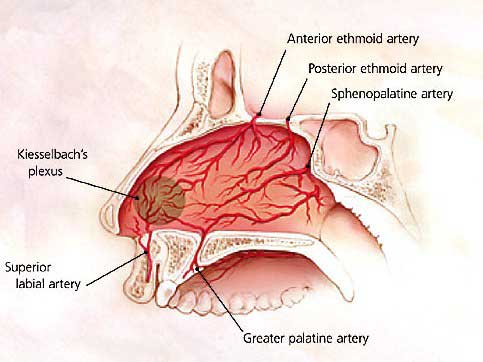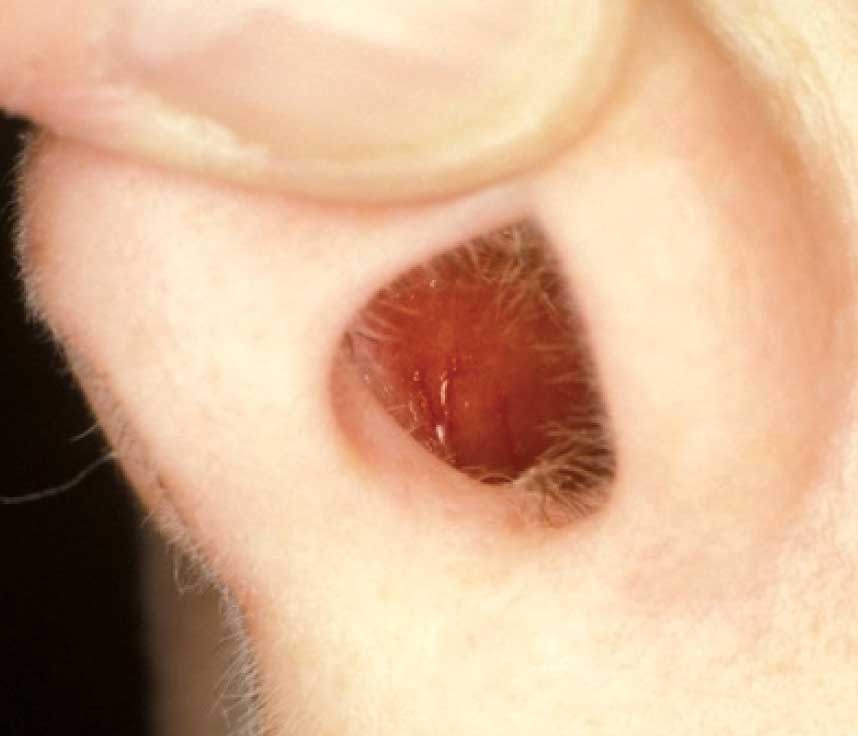The Treatment of Spontaneous Epistaxis: Conservative vs Cautery
Ravi Kumar Raju Mudunuri1, M.A.N. Murthy2
1. Associate Professor in ENT, KIMS, Amalapuram, AP, India.
2. Professor and Head of Department of ENT, KIMS, Amalapuram, AP, India.
NAME, ADDRESS, E-MAIL ID OF THE CORRESPONDING AUTHOR: Dr. Ravi Kumar Raju Mudunuri, M.S. (ENT), MRCS (Glasg), DOHNS (Lon) Associate Professor in ENT Konaseema Institute of Medical Sciences, Amalapuram-533201, Andhra Pradesh, India.
Phone: 0091-9908547999
E-mail: rajumrk@yahoo.com
Aim
To find the best treatment for spontaneous epistaxis by a conservative approach or by an intervention with silver nitrate cautery.
Study Design
A prospective study with two groups which were randomly selected for the conservative management or cautery.
Materials and Methods
94 patients are studied in two groups of 42 patients who were treated conservatively and 52 patients who were treated with silver nitrate cautery. The patients were followed up for 1 week and the results were tabulated with regards to the recurrence of the bleeding.
Results
Both the groups of patients who were treated conser-vatively or with cautery showed minimal recurrent bleeding with rates of 30% and 26% respectively. Statistically, there was no significant difference in the outcome. The pain was more in the cases which were treated with cautery.
Conclusion
Both the groups of patients who were treated conservatively or with cautery showed equal rates of the outcome, with the pain being slightly more in the group which was treated with cautery.
Epistaxis,Neomycin Ointment,Silver nitrate cautery
Introduction
Epistaxis is the bleeding from the nose. It is seen in 60% of the people and among these, 80% are from the Keisselbach's plexus [Table/Fig-1] and they are called as anterior epistaxis [1]. It is one of the common presentations to an ENT surgeon [2–3] The most common causes [4] are nose picking, trauma, infection, hypertension, etc. Different modalities of treatments are available in the Out patient department settings. Among these, the conservative method and chemical cautery with silver nitrate are commonly followed. We intended to find the best modality among these two methods to treat nose bleeds.
Anatomy of Little's Area – source of anterior epistaxis.(courtesy -www.drpaulose.com)

Materials and Methods
A prospective study on 114 patients was done in the Department of Otorhinolaryngology, Konaseema Institute of Medical Sciences, Amalapurm, during a period of three years, between 2008 and 2011.
The patients with a history of spontaneous epistaxis of the anterior type, who presented on the same day, were selected. They were not actively bleeding on presentation. A proper history was taken and the patients were examined for the bleeding points.
The exclusion criteria included the patients with any comorbid con-ditions and immunodeficiency conditions and those with a history of bleeding diathesis, posterior epistaxis and active bleeding.
All the selected patients were investigated for the coagulation profile and the haemoglobin level as a screening.
Half the patients (57) were advised the conservative treatment . The other half (57) were treated with silver nitrate cautery of the bleeding points/prominent vessels. Both the groups were sent home with the Neomycin ointment (Neosporin was advised for the sake of uniformity). Both the groups were advised to take analgesics only if they were needed. All the patients were followed up in the review clinics after one week and again after one month. Considering that a majority of the recurrences occur within one week, the follow up statistics at one week were considered for comparision. The patients who failed to show up for the follow up were excluded from the study.
Results
Among the initial 114 cases which were selected, 20 patients failed to attend the review clinics. The average age of the patients was between 10-20 years [Table/Fig-2]. No significant sex difference was found. Of the 94 patients who attended the one week's follow up, 42 belonged to the conservative treatment group and 52 belonged to the group which was treated with cautery. Among the group which was treated conservatively, 30% (13 cases) reported to have at least one episode of epistaxis. Among the group which was treated with cautery, 26% (14 cases) reported to have at least one episode of epistaxis. Excluding the common affects of the Neomycin ointment in both the groups, when the treatment protocols of the conservative and the cautery groups were compared, it was found that there was no statistical significance with regards to the recurrence rate with either treatment protocols. From both the groups, none of the patients needed to report to the hospital for recurrence, as the bleeding was minimal. In the group in which cautery was done, at least half the patients reported to have taken analgesics, whereas the other group did not use analgesics.
| Age / Sex | Male | Female |
| <10 yrs | 8 | 5 |
| 11-20 yrs | 28 | 30 |
| 21-30 yrs | 6 | 5 |
| 31-40 yrs | 3 | 3 |
| >40 yrs | 4 | 2 |
Discussion
Epistaxis is one of the important emergency situations which every ENT surgeon faces. A spontaneous epistaxis is very common in the paediatric age group, though a history of a preceding upper respiratory tract infection is present. In most of the cases, no specific cause is found. In a majority of them, the bleeding is at the little's area from Keisselbach's plexus [5] [Table/Fig-3]. The bleeding is minimal and it is not life threatening. Most of the studies revealed that a majority of the epistaxis cases can be treated medically rather than by surgery. In some, applying a simple digital pressure with icepacks is sufficient for the management of the bleeding, though some of them may require cauterization [6]. The easiest method of chemical cautery in the outpatients setting is silver nitrate cautery. Though different treatment modalities are available like low pressure packs, merocel sponges, high pressure balloon packs, [7] chemical or electrical cautery or surgical management, most of the times, the patients can be managed on an outpatient basis, if no other comorbid conditions exist [6]. Here, in our study, we compared two different modalities of treatment, with no statistical significance.
Little's area with prominant blood vessels

Conclusion
A spontaneous epistaxis with no comorbid conditions can be managed either conservatively or by chemical cautery with 25% silver nitrate, as per the choice of the surgeon, as the outcome is not significantly different, except for the fact that the cautery might be slightly painful.
[1]. Al Khtoum N, Al Roosan M, The evaluation of conservative measures in the treatment of epistaxis Khartoum Medical Journal 2008 1(1):15-17. [Google Scholar]
[2]. Moreau S, De Rugy MG, Babin E, Courtheoux P, Valdazo A, A supra-selective embolization in intractable epistaxis: a review of 45 cases Laryngoscope 1998 Jun108(6):887-88. [Google Scholar]
[3]. Soyka M.B., On the effectiveness of the treatment options in epistaxis: an analysis of 678 interventions Rhinology 2011 Oct49(4):474-78. [Google Scholar]
[4]. Guarisco JL, Graham HD 3rd, Epistaxis in children : the causes, diagnosis and the treatment Ear Nose Throat J. 1989 Jul68(7):522528-30, 532 passim [Google Scholar]
[5]. Ballie N, Hanna B, A model of the airflow in the nasal cavities : the implications for the nasal air conditioning and epistaxis Am J Rhinol Allergy 2009 May-Jun23(3):244-49. [Google Scholar]
[6]. Vis E, van den Berge H, The treatment of epistaxis without the use of a nasal packing; a patient study Rhinology 2011 Dec149(5):600-04. [Google Scholar]
[7]. Tam S, Rotenberg B, Contemporary perspectives on the management of posterior epistaxis: a survey of Canadian otolaryngologists J Otolaryngol Head Neck Surg. 2011 Jun140(3):249-55. [Google Scholar]